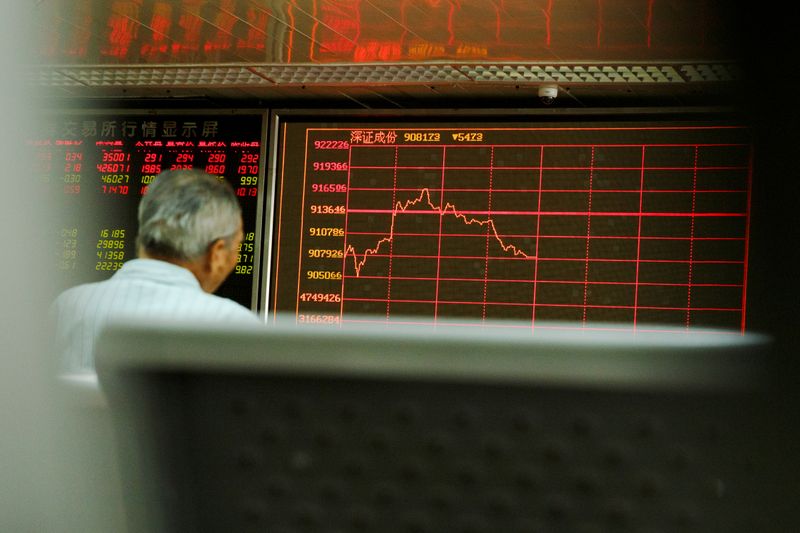SHANGHAI (Reuters) – China is likely to accelerate fiscal spending and credit growth as its economic recovery slows, but investors are expecting any easing measures from Beijing to be finely targeted as the U.S. Federal Reserve prepares to taper its own stimulus.
China benchmark rates falling
To view the graphic, click here: https://fingfx.thomsonreuters.com/gfx/mkt/movanndxmpa/20210827-lprmlfcgbshibor.png
Market participants are increasing their bets that the People’s Bank of China (PBOC) will once again reduce banks’ reserve requirement ratio (RRR) to make up for liquidity shortfalls towards the year-end. At the same time, market yields are low enough that few expect a policy rate cut which would widen the Sino-U.S. monetary stance gap, risking a surge in capital outflows.
“If some infrastructure projects have to rely on the issuance of local government bonds, then the government should have an intention to lower bond yields,” said Iris Pang, Greater China economist at ING said. She expects a 50-basis-point RRR cut in the fourth quarter. The PBOC last cut RRR in July.
China local government bond issuance
To view the graphic, click here: https://fingfx.thomsonreuters.com/gfx/mkt/lbvgnndjdpq/202108localgovissuance.png
Recent economic data has showed the world’s second-largest economy is losing steam and facing more pressure in the second half. Investors increasingly expect local governments to boost the pace of bond financing to support credit growth and revive activity.
“We think the intention is to keep growth in the 5-6% range in 2022, with the government likely to attach greater importance to curbing downside risks than to boosting upside potential. Fiscal policy will likely do the heavy lifting from H2-2021, with monetary policy playing a supportive role,” said Ding Shuang, chief economist for Greater China and North Asia at Standard Chartered.
China approved 4.47 trillion yuan ($692.10 billion) worth of new local government bond quotas, including 3.65 trillion yuan in special purpose bond issuance, at the annual parliament meeting in March. Many market participants expect the local government bond supply could exceed 1 trillion yuan in September.
China monetary settings soften
To view the graphic, click here: https://fingfx.thomsonreuters.com/gfx/mkt/zdvxooklopx/20210827-chinamonetary.png
Analysts expect ample liquidity conditions with a loosening bias throughout the year to offset rising bond supply and heavy maturities of medium-term lending facility loans. Those expectations have strengthened after China’s Politburo, the ruling Communist Party’s top decision-making body, called for “cross-cyclical” policy adjustments with an eye on longer-term stability and sustainability of macroeconomic policy.
But policymakers are also wary of increased two-way yuan volatility in the light of possible Fed tapering, and economists expect Chinese authorities to act quickly to prevent sharp capital outflows.
The yuan slumped against the dollar when the Fed ended its previous quantitative easing (QE) stimulus programme in 2014.
To view the graphic, click here: Export growth eases as yuan firms
https://fingfx.thomsonreuters.com/gfx/mkt/myvmnnxzzpr/20210827-exportsyuan.png
($1 = 6.4586 Chinese yuan)
(Reporting by Winni Zhou and Andrew Galbraith; Editing by Kim Coghill)



















